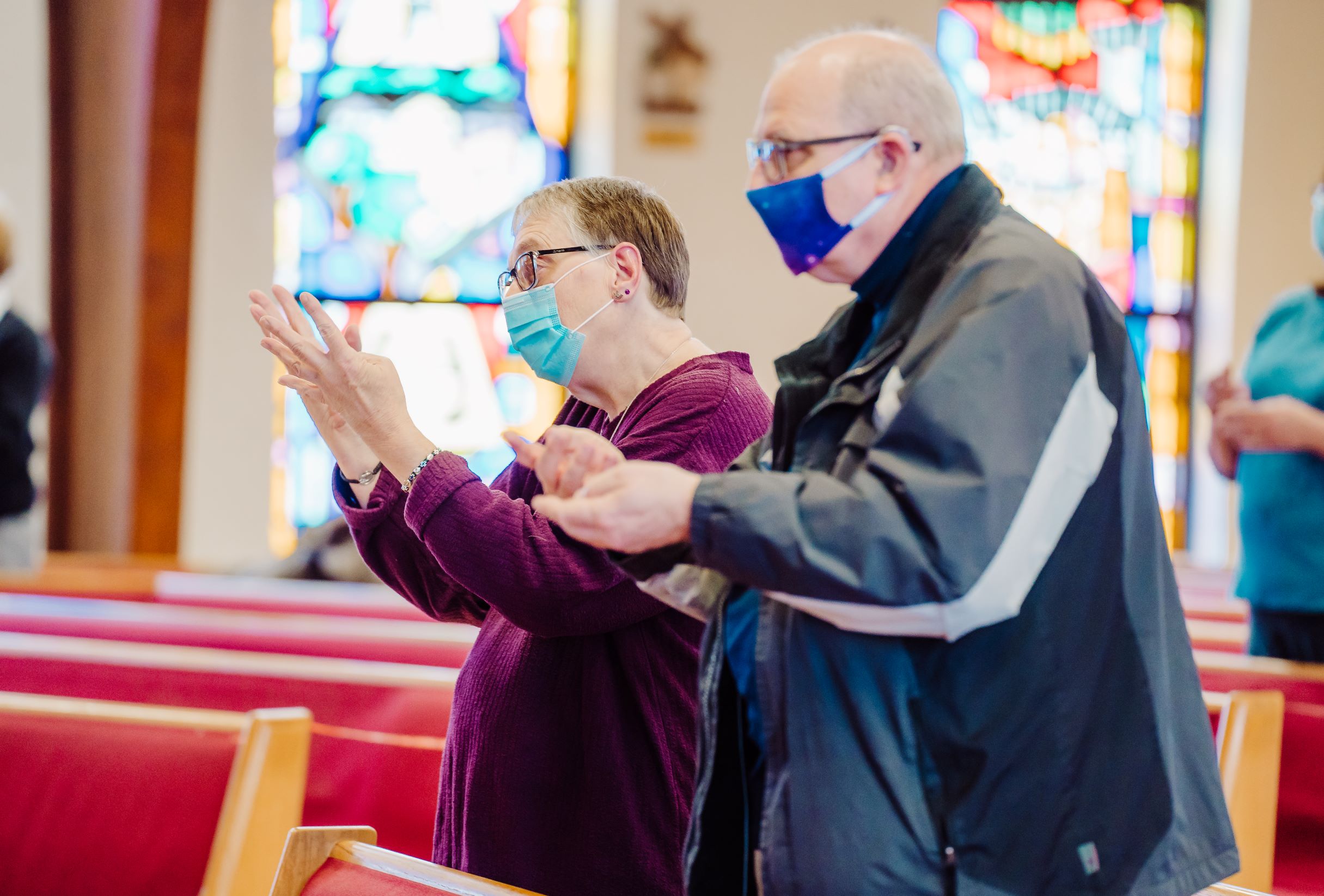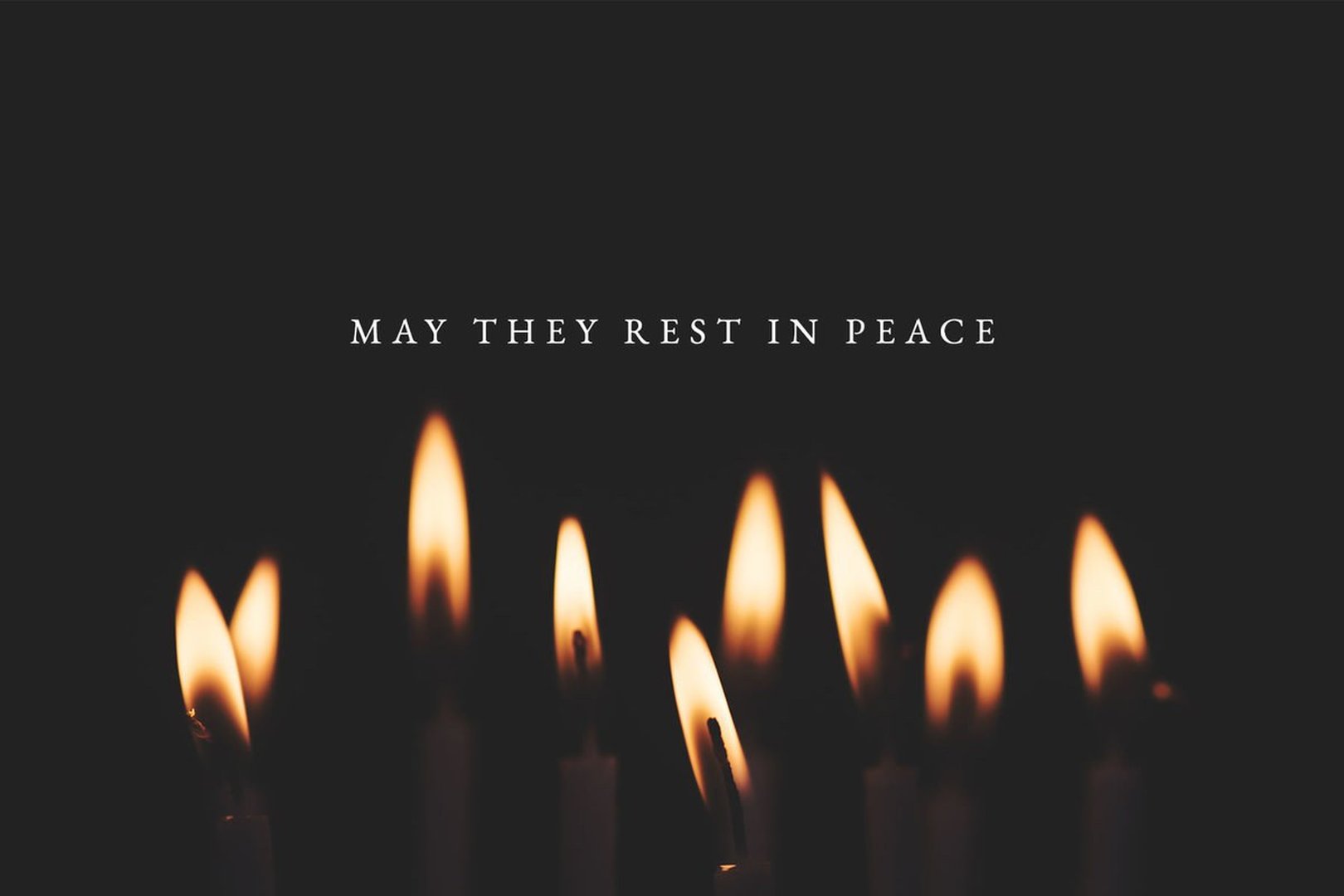Parishioners who rely on lip-reading, facial expression find mask-wearing a difficult cross, but ministries across Metro Detroit seek to help
DETROIT — As Michigan grapples with yet another surge of COVID-19 cases, the pandemic has presented sustained challenges for everyone.
But while few people enjoy wearing masks, the prolonged outbreak has presented specific challenges for those in the deaf and hard-of-hearing community, many of whom rely on lip-reading and facial expressions to communicate, say leaders in Metro Detroit’s deaf Catholic community.
“It has been incredibly frustrating because so much of our communication and our language has to do with what you see on the face, and it is more than just seeing somebody’s eyes,” Marcy Colton, agency director for the Deaf Community Advocacy Network (DEAF C.A.N.!) in Sylvan Lake, told Detroit Catholic. “When we talk and have inflections that go up and down, that is a lot of what the face shows.”
The general isolation of the pandemic is being felt more acutely by deaf and hard-of-hearing people, Colton added, as access to communication has been limited by masks, a lack of in-person interaction and the fact that many organizations and government agencies do not use sign language interpreters during important news briefings.
Even the age-old practice of passing notes is now taboo, for fear of standing too close or sharing a pen, Colton added.
“Masks have really put people at a disadvantage because you can’t see the body language,” Colton said. “Without being able to see the whole face, it’s really almost impossible to carry on a conversation.”
A difficult conversation
According to Michigan.gov, as of 2020, the state had 740,000 deaf, deafblind and hard-of-hearing residents. While many feel forgotten because of the invisibility of their disability, the Catholic Church in Metro Detroit has taken steps over the years to reach out, said Fr. Michael Depcik, OSFS, pastor of the St. John’s Deaf Center in Eastpointe.

Fr. Depcik, who himself is one of a small handful of deaf priests in the United States, said the St. John’s Deaf Center serves an important role in ministering to deaf Catholics across southeast Michigan. Founded in 1914, Metro Detroit’s deaf Catholic community is one of the oldest and largest in the United States.
“There are many deafs who don’t really understand English,” Fr. Depcik told Detroit Catholic through an interpreter. “Most deaf people grew up without communication, and English is their second language, or at worst, third. They can read online publications, but catching the information from a second or third language perspective is really hard.”
Without proper interpreters or closed captions, many deaf and hard-of-hearing people missed out on crucial information regarding the pandemic, Colton said. Furthermore, while virtual meeting technology such as Zoom or Facetime allow people to communicate without masks, it doesn’t replace the nuance of body language.
“I have met people who are fluent signers who have been signing since they were babies who said they didn’t realize how many visual cues they got from the face and the mouth,” Colton said.
Colton said that while DEAF C.A.N.! has been able to offer services virtually, including virtual painting and yoga classes with phone and sign language interpreters, there are some services that simply cannot be offered virtually.

For example, in the past, members of the organization would help deaf-blind clients around the house, take them out to eat or shopping — an impossibility now.
“The deaf community is really tight(-knit), and people love to get together to play cards or play deaf bingo,” Colton said. “That social component is all gone. They have adapted communication and are doing a bit more virtual stuff, but not much.”
Overcoming challenges
The isolation caused by the lack of services and accommodations is being felt acutely by those in the deaf Catholic community, Fr. Depcik said.
“In any place, the deaf community is going to feel left out compared to the experience of hearing people,” Fr. Depcik said. As many as 98% of deaf people don’t go to church, Fr. Depcik said, either because of a lack of access or the lack of a religious foundation passed down by their families.
“A huge majority were born to hearing families, and of that majority, 10% of parents actually learn sign language,” Fr. Depcik said. “As a result of that, picking up English and then going to a church is going to result in a negative experience because of the communication breakdown.”
Services for deaf Catholics are few and far between, Fr. Depcik added.
Daniel and Ellen Gibb drive an hour from Port Huron to attend Mass at the St. John Deaf Center, but because of the pandemic, the number of congregants allowed to attend Mass there has shrunk. Before the pandemic, Fr. Depcik served more than 200 parishioners weekly, but those numbers have fallen by about half.

Fr. Depcik is able to remove his mask as he celebrates Mass, but parishioners still have to wear masks when in person, leading many to rely on livestreams and videos instead. Still, those who attend are grateful for the opportunity.
The Gibbs prefer attending in-person Masses when they can, weather and space permitting, but they miss the social aspect that the pandemic has stripped away. Before the pandemic, the Gibbs were involved in teaching children’s classes and distributing Communion at the center.
“There is no handshaking. Deaf people tend to hug each other, and there is none of that,” Daniel Gibb told Detroit Catholic. “So it feels very cold and distant, and there are a lot of boundaries being set. Watching live Mass ... after it’s done you just kind of feel empty. You feel like you were just hypnotized by the screen, and it ends.”
When they are unable to make it to St. John’s, the Gibbs attend a hearing church near their home, but it’s not the same.
“We go to a hearing Catholic church near here, but unfortunately the hearing church doesn’t have an interpreter,” Ellen Gibb said. “It would be great to be a part of that Mass and the readings and know what the minister there is doing. We sit there for the sake of going to church, but we don’t understand anything that is being said. We do wish a lot of the other Catholic churches near our home would have access to interpreters.”
Clear masks a welcome innovation
While an imperfect solution, many in the community have taken to wearing masks with clear plastic panels as a way to maintain some form of visual communication. One St. John’s parishioner, Klodia Gossiaux, began making and selling clear masks through her company, “Klodia’s Face Masks and More.”
“I kept thinking that there must be a way to help deaf and hard-of-hearing friends who were having the same problem as (my husband) Andy and me,” Gossiaux wrote to Detroit Catholic. “I tried several ways by cutting a piece out of a mask and putting in different types of clear materials and different size openings. I finally found just the right clear plastic and right size opening to make lip reading possible.”

While helpful, it’s not an ideal fix. The plastic tends to fog up — though Gossiaux offers instructions for how to keep that from happening — and the materials and masks can be more expensive and harder to obtain.
Colton encourages hearing people to be patient and mindful as the deaf community navigates the struggles of the pandemic, encouraging Catholics to put themselves in others’ shoes.
“We as hearing people are just lucky to hear what is going on and have that ability to get the info we need and talk to people,” Colton said. “It is a privilege that we have.”
Fr. Depcik echoed those sentiments, adding it’s incumbent upon the Church to keep the needs of all her faithful in mind as the pandemic wears on.
“Most people have the wrong assumptions about deaf individuals, but it’s not their fault,” Fr. Depcik said. “It is important that we educate and help people understand our specific needs and our language. Once people understand that, they can continue to develop a relationship and advocate for us.”
Deaf Masses in the Archdiocese of Detroit
Masses are celebrated weekly for the deaf and hard-of-hearing community at the following locations:
- St. John’s Deaf Center Chapel, 16103 Chesterfield Ave., Eastpointe (Tuesdays at 10:30 a.m. - Livestream only)
- Our Lady of Loretto Church, 17116 Olympia, Redford Township (Sundays at 9:30 a.m.)
- Holy Innocents Church, 26100 Ridgemont St., Roseville (Sundays at 11:30 a.m. - voice interpreted for the hearing community)
Masses are often celebrated outdoors in response to COVID-19. Bring your own lawn chair and maintain social distance. Visit https://sjdc-oll.org/ for more information.
An earlier version of this story misspelled Klodia Gossiaux’s name.










